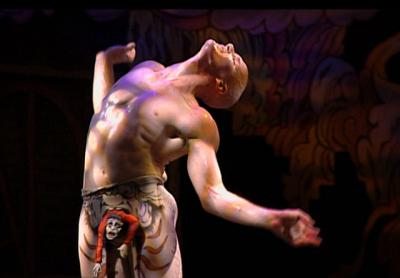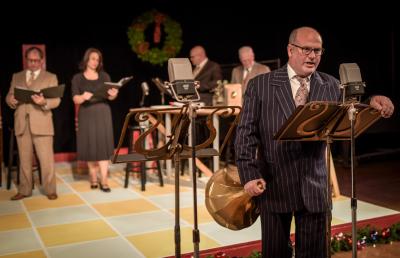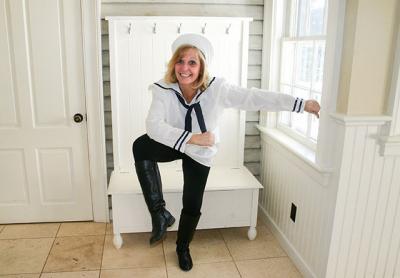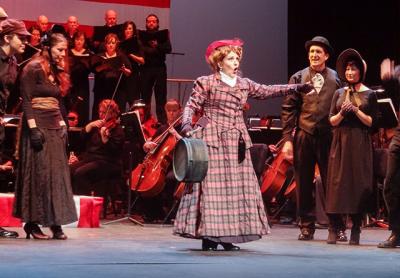Capturing the Sublime on Film
Capturing the Sublime on Film

Collaboration across artistic disciplines is a tricky endeavor. How does an artist paint a sound, or a musician play a color? The symbiosis, or clash, may produce the sublime or the horrific.
Audiences fill the Love Theatre at the Mirage Hotel in Las Vegas, where Cirque du Soleil has presented “Love,” a circus-like performance set to clever mashups of the Beatles’ oeuvre, since 2006. But the Bee Gees, Peter Frampton, and nearly everyone else involved saw their reputations tarnished for years to come upon the 1978 release of “Sgt. Pepper’s Lonely Hearts Club Band,” a criminally misguided effort to put the Beatles’ psychedelic masterpiece to film. Even the Beatles themselves misfired when they tried their collective hand at writing and directing the ponderous “Magical Mystery Tour” film, released on the heels of the “Sgt. Pepper” album.
Mirra Bank, however, a documentary filmmaker who lives in Manhattan and East Hampton, captured the sublime, in all its untidy complexity, with “Last Dance,” a chronicle of the collaboration between the modern dance company Pilobolus and the late author and illustrator Maurice Sendak. The pairing produced “A Selection,” the company’s interpretation and depiction of the Holocaust.
“Last Dance” will be screened next Thursday at 4 p.m. at Bay Street Theater in Sag Harbor as part of the Hamptons Take 2 Documentary Film Festival. Ms. Bank will participate in a question-and-answer session after the screening. Tickets are $15 and available at ht2ff.com.
Ms. Bank — whose credits include the PBS series “Nobody’s Girls,” in which stories of real women of the Old West were re-enacted by actresses, and “The Only Real Game,” about the baseball-crazed residents of the unstable border state of Manipur, India — finds and depicts the stories within the story in “Last Dance.” The dance company’s collaborative nature inevitably produces friction, as egos and visions struggle for supremacy and a work takes shape. Sendak, who died in 2012, had lost many family members in the Holocaust; speaking directly to the camera, his countenance lays bare the lingering ache and emptiness.
Quickly, one wonders if this collaboration will self-immolate before producing anything: While the company’s dancers — Rebecca Anderson, Otis Cook, Josie Coyoc, Matt Kent, Gaspard Louis, and Benjamin King — slowly forge a work of art that is as playful as it is heart-rending, the company’s artistic directors Robby Barnett, Michael Tracy, and the late Jonathan Wolken quarrel among themselves and with Sendak and his collaborator, the writer and director Arthur Yorinks.
Patience and dedication are rewarded, however. The Sendak-designed set and a soundtrack featuring Hans Krasa and other composers murdered in the Holocaust are the backdrop to the dancers’ affecting performance.
“Nobody knew what was going to happen,” Ms. Bank said of the project, “and what was attractive to me also was that leap of faith. It’s why I make verite documentary. If you don’t enjoy that level of risk, it’s probably not what you do. But I felt that these were world-class creative people, and whatever happened was going to be vivid and probably truthful, which was what I was interested in.”
Ms. Bank includes footage from a Nazi propaganda film depicting seemingly happy children at the Theresienstadt concentration camp, where Krasa had been sent before his murder at Auschwitz. That propaganda film depicts children interned there performing Krasa’s opera “Brundibar,” which Pilobolus used in “A Selection.”
“They created in a very push-pull process,” Ms. Bank said of Pilobolus, “the idea of what the story was going to be and the through-line of what the action was going to be. Then they edited selections of this music to work with what they had done.”
The dance company “really went out of their way to find people outside of their discipline,” she said. “That part of it was exhilarating. Everything you do changes you, and every film you make changes you. But for me this was profound, and a very important piece of work.”
The Hamptons Take 2 Documentary Film Festival, celebrating its 10th year, starts next Thursday and concludes on Dec. 4.





